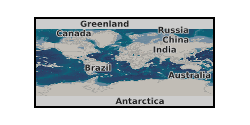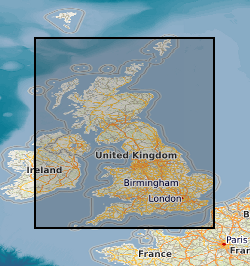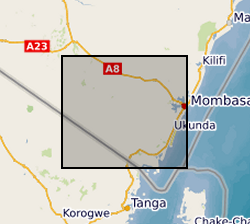
Type of resources
Available actions
Topics
Keywords
Contact for the resource
Provided by
Years
Formats
Representation types
Update frequencies
Service types
Scale
Resolution
-

Coordinated by Haroun Mahgerefteh at UCL, the EC funded FP7 CO2QUEST project addressed the main challenges associated with determining the optimal composition and purity of CO2 product streams derived from carbon capture systems for enabling its safe and economic transport and storage. The project brought together academics and major stakeholders to perform computational studies backed-up by large-scale experiments aimed at identifying CO2 mixtures that have the most profound impact on the different parts of the CCS chain. The project ran from March 2013 until June 2016, involving 9 partners across Europe, including from Canada and China. It resulted in over 100 peer reviewed journal publications and conference proceedings, three international conferences and several newsletters, receiving the IChemE Highly Commended Global Process Safety Award in 2016. More information about CO2QUEST including its objectives, deliverables and list of publications may be found at: http://www.co2quest.eu/
-

This website provides interactive access to geospatial isotope data for Great Britain. The site includes isotope data for strontium, oxygen and sulphur distributions across Great Britain. The user can input isotope measurements from a sample and the website will compare it with British data distributions and provide a downloadable map of areas that match the composition of the unknown. The project is rooted in archaeological studies but has applications in the modern world of food traceability.
-
This BGS led survey, conducted by Gardline took place between Oct2008 and Mar2009 in 3 phases. The first 2 phases were conducted aboard the Gardline MV Vigilant. The first phase was completed due to the advent of adverse whether. The second phase completed the deeper water portion of the survey Information from the first two phases is held under Survey Number 2008_5_MEPF. A 3rd phase was planned and completed on short notice in the shallow water parts of the survey area aboard the MV Confidante. Information from this third phase is held under Survey Number 2009_7_MEPF. The aim of the Humber Regional Environmental Characterisation (REC) survey, (unded through the Marine Environment Protection Fund of the Aggregate Levy Sustainability Fund (MALSF) was to acquire data, of the highest quality and resolution possible, to enable broadscale characterisation of the seabed habitat, associated biological communities and potential historic environmental assets within the region. The project was managed by the British Geological Survey (BGS), who largely designed the geophysical survey programme, with archaeological direction being supplied by the University of Birmingham and the environmental programme being directed by Marine Ecological Surveys (MES). The “geophysical” and subsequent “ground truthing” field work was carried out by Gardline Geosurveys under the guidance of the other partners. This report and the accompanying similar volume for the ground truthing phase, describe the field operations. The aims of these preliminary phases of the project were to provide data for other interested parties to process. Geophysical data collected includes: sub-tow (Suface tow on Confidante), Side-scan Sonar, Multibeam bathymetry, magnetometer. Technical details of the survey are contained in the Gardline Operations Report 7776/Ops/Geo.
-

Contains location and associated parameter information for microseismicity detected in the Reykjanes peninsula between June 2020 and August 2021. Primary detection and location carried out using Quakemigrate. Template matching used to find very small magnitude events. GrowClust used to obtain accurate relative relocations. Local magnitudes of events also computed. Data from a total of 42 stations were used for the detection and location process. Repository also includes the 1-D velocity model used for the relocation.
-
Gro for GooD VES (Vertical Electrical Soundings) Data, Kwale County, Kenya (NERC grant NE/M008894/1)

Results of Vertical Electrical Soundings (VES) study conducted in Kwale County, Kenya in July and August 2017 by University of Nairobi and Water Resources Management Authority as part of the Gro for GooD project (https://upgro.org/consortium/gro-for-good/) to determine the existence of deeper aquifers.
-
An oil and gas industry site survey for a jack-up rig acquired under licence P1139 in December 2010. The block number traversed was 44/19.
-
An oil and gas industry site survey acquired under licence P2216 in June 2016. The block numbers traversed were 3/30, 4/26.
-
An oil and gas industry site survey for a jack-up rig, debris clearance acquired under licences P083, P1447 in April 2013. The block number traversed was 49/10.
-
This sampling survey, aboard the drilling vessel Mariner owned by Heerema Marine Contractors, was part of the British Geological Survey (BGS) Regional Mapping Programme and aimed to drill boreholes in areas covered by Quaternary sediments too thick for vibrocoring or gravity coring methods. The results would aid with the interpretation of shallow and deep seismic records used in the compilation of geological maps. Boreholes were drilled at twenty three sites. ?WB/MI/81/15, 18,19C?
-
Not Entered
 NERC Data Catalogue Service
NERC Data Catalogue Service